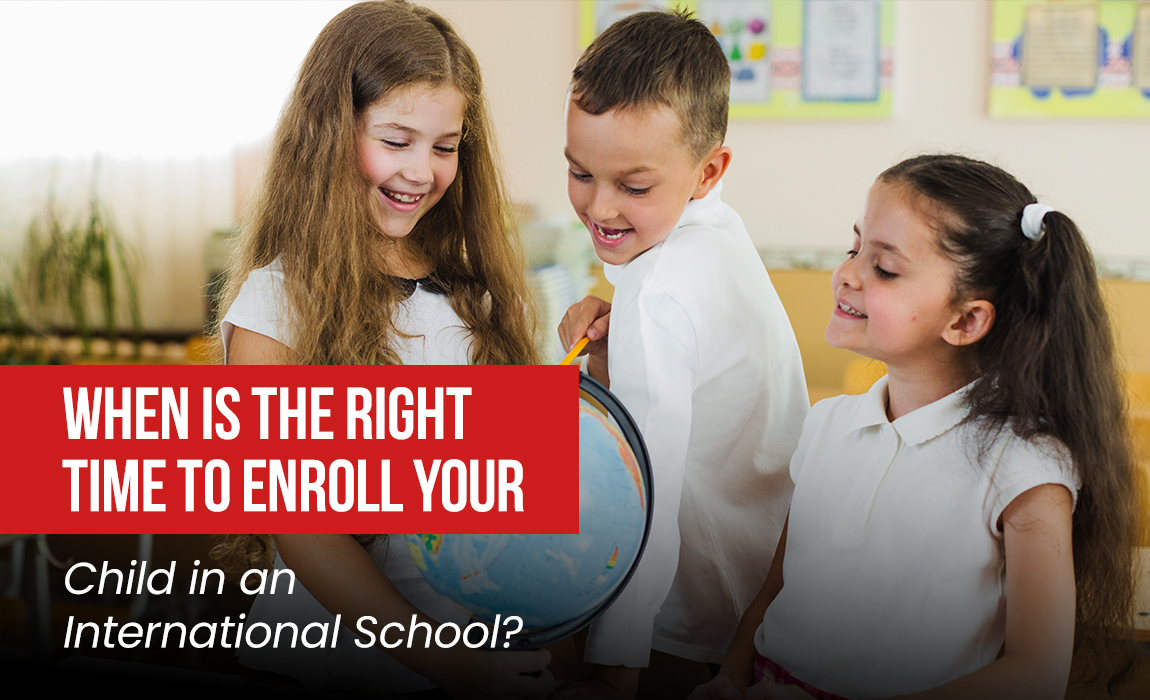Choosing the right time to enroll your child in an international school is a crucial decision that influences their academic and personal growth. International schools offer a global curriculum, diverse cultural exposure, and advanced learning methodologies, but determining the ideal age for enrollment requires careful consideration of various factors.
Key Factors to Consider Before Enrollment
1. Academic Readiness
A child’s ability to adapt to a structured learning environment plays a significant role in determining the right time for enrollment. Early childhood education in international schools typically begins at the preschool level (ages 3-5), where children are introduced to foundational skills in language, mathematics, and social interaction. For primary education, children between the ages of 5-7 usually transition into formal schooling.
2. Social and Emotional Development
Adapting to a new school environment, especially in an international setting, requires strong social and emotional skills. Parents should assess whether their child is comfortable interacting with peers, following instructions, and managing separation from parents.
3. Language Proficiency
International schools often use English or other global languages as the primary medium of instruction. If your child is not proficient in the language of instruction, it may take time to adjust. Some schools offer language support programs to help students bridge this gap.
4. Curriculum and Learning Approach
Understanding the structure of international curricula, such as IB (International Baccalaureate), Cambridge, or American curriculum, is essential. These curriculums focus on inquiry-based and holistic learning, encouraging critical thinking and creativity. Parents should choose a curriculum that aligns with their child’s learning style and future educational goals.
5. Relocation and Stability
If your family moves frequently due to work commitments, enrolling your child at a younger age in an international school can provide a stable educational experience. Many international schools follow a standardized curriculum, making it easier for children to transition between schools in different countries.
6. Extracurricular and Cultural Exposure
International schools provide diverse extracurricular activities, such as sports, arts, and community service, that help students develop well-rounded personalities. Enrolling at an early stage allows children to explore their interests and talents in a structured manner.
Best Age to Enroll in an International School
1. Early Years (Ages 3-5)
- Ideal for developing foundational skills in communication, creativity, and social interaction.
- Helps children become familiar with an international learning environment.
- Exposure to multilingual education from an early stage.
2. Primary School (Ages 5-7)
- A crucial stage for academic and cognitive development.
- Introduction to structured learning with a focus on critical thinking and problem-solving.
- Development of social skills and teamwork in a diverse setting.
3. Middle School (Ages 11-13)
- Suitable for students transitioning from national education systems to international curricula.
- Strengthens analytical and independent learning skills.
- Provides exposure to global perspectives and interdisciplinary learning.
4. High School (Ages 14-16)
- Best for students who plan to pursue higher education abroad.
- Focuses on advanced subjects, research-based learning, and college preparation.
- Offers opportunities for international certifications like IGCSE, IB Diploma, or AP courses.
How to Ensure a Smooth Transition
1. Visit the School and Understand Its Environment
Parents should take school tours, meet teachers, and understand classroom dynamics to ensure the best fit for their child.
2. Engage in Orientation Programs
Many international schools offer orientation sessions to help new students adapt to the curriculum and school culture.
3. Support Emotional Adjustment
Parents should communicate with their children regularly and encourage them to share their experiences, ensuring they feel comfortable in the new environment.
4. Seek Additional Academic Support if Needed
If your child needs extra help adjusting to the curriculum, consider after-school programs or tutoring.
At Rainbow International School, we provide a nurturing and globally competitive learning environment that helps students transition smoothly into international education. Our curriculum is designed to foster critical thinking, creativity, and cultural awareness while ensuring students receive personalized attention to develop their full potential. With a strong emphasis on academics, extracurricular activities, and character-building, we prepare students to thrive in a dynamic global landscape.
Conclusion
Enrolling your child in an international school at the right time can provide them with exceptional academic opportunities, cultural exposure, and a globally competitive learning environment. While the ideal age depends on individual readiness and family circumstances, ensuring a smooth transition through careful planning will set the foundation for long-term success. By considering factors such as academic preparedness, emotional adaptability, and curriculum preferences, parents can make an informed decision that aligns with their child’s educational journey.
Frequently Asked Questions
The ideal age varies based on academic and emotional readiness. Many children start preschool at ages 3-5, while primary school enrollment is common at ages 5-7.
We offer orientation programs, language support, and interactive learning approaches to ensure a smooth transition for new students.
Yes! We provide a structured academic transition plan to help students integrate into our curriculum at any stage.
Early enrollment helps children develop multilingual skills, social adaptability, and a strong academic foundation in a globally recognized curriculum.
We follow internationally recognized curricula such as IB, Cambridge, and other global education frameworks to prepare students for higher studies and global careers.

